While we find writing with a fountain pen or simply writing by hand enjoyable, we wouldn’t want any ink on our hands or clothes! And while accidents happen, we’re here to help.
We’ve previously produced a comprehensive How-To-guide to removing all different kinds of stains, but today, we’re zeroing in on ink, in particular, showing you in detail how to remove ink stains, no matter what ink you use.
Remove Ink from your Hands
Whether you’ve only stained your hands or you’ve gotten ink on both your clothes and your hands, you’ll need to get the ink off of your hands first, before you do anything else.
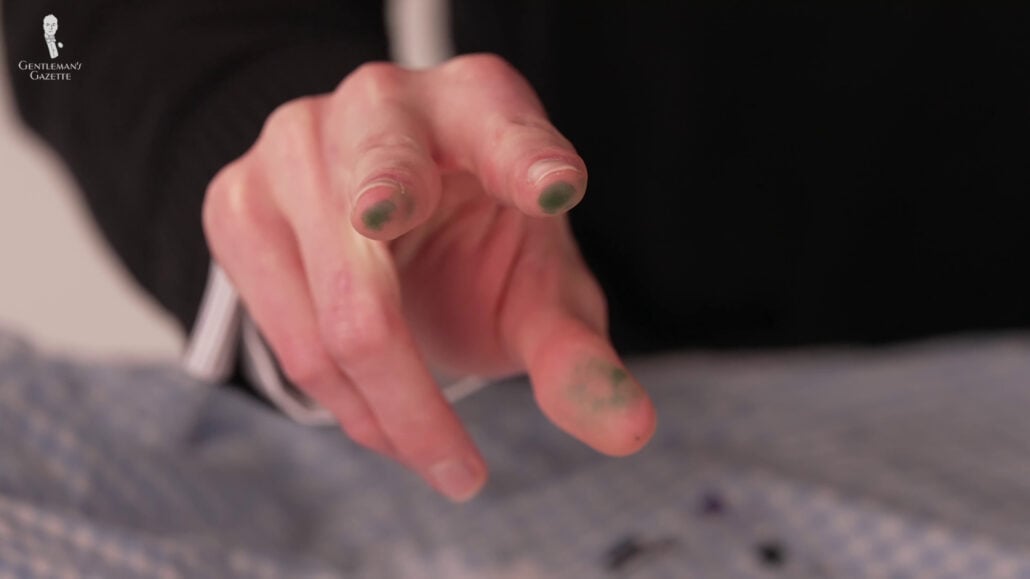
If the ink is still wet, first wash your hands thoroughly with soap and water. Dark inks can be especially difficult to remove and may require the use of more serious solutions like isopropyl alcohol found in rubbing alcohol or acetone found in nail polish remover. Be sure to use a small amount of either of these first, though, as they can irritate your skin.
And after washing and cleaning, if stubborn stains still remain on your hands, don’t worry. After two to three days, as you naturally shed your skin cells, the rest of these stains will disappear.
Pre-treat Ink Stain, If Possible
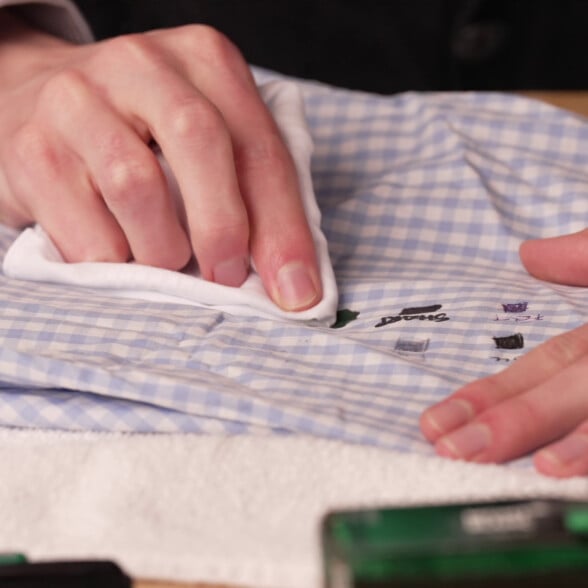
Act on it!
Wet ink is easier to remove than dry ink, so it’s best to act on it immediately before it dries and sets.
Sadly, though, clothing fibers don’t naturally regenerate their exteriors. So, if you have a stain, it’s best to act on it as quickly as possible. Firstly, wet ink is easier to remove than dry ink, so try to remove as much of the wet ink as you can right after a stain is made. Using a clean, dry cloth or a paper towel, blotch the stain, but don’t rub it as this could press it further into the fibers.
Next, sprinkle an amount of table salt on the stain, as salt is a desiccant that will absorb liquids. Keep removing and adding salt until all of the liquid has been soaked up. And at this stage, don’t apply any liquid to the stain, as adding more liquid may simply spread the ink around, making the stain bigger.
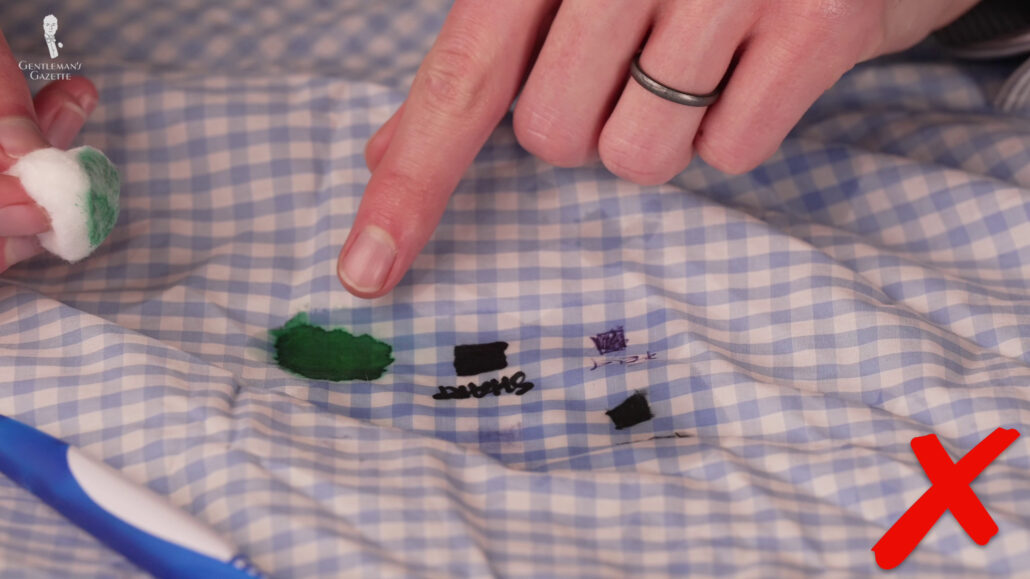
Determine Washing Instruction
After pre-treating, determine how the fabric in question is usually washed. In other words, if they’re available on a tag, follow the garment care instructions. Unique fabrics like silks and leathers will require specialty cleaners for any type of stain. This post isn’t sponsored, but Leather Honey and the Laundress are two brands we recommend for these types of uses.
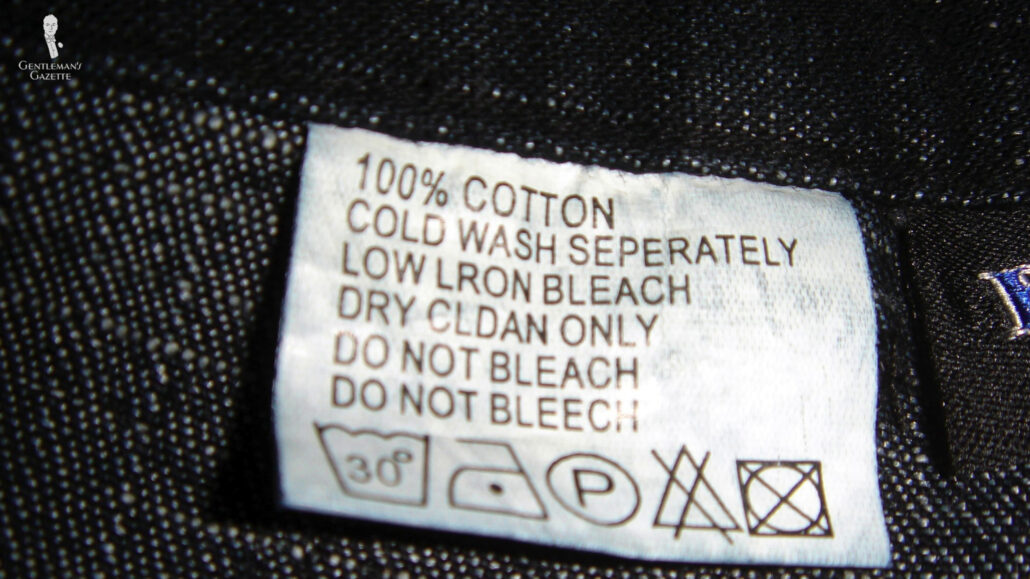
Most other materials, even if they say dry clean only, can be spot cleaned at home, provided that you’re careful. But, if you want to be as careful as possible, you’re probably better off taking a garment to the dry cleaner as you don’t want to ruin it just trying to remove one stain.
Determine Colorfastness
On that note, make sure that you don’t put any ink-stained garment into the dryer as the heat will set the stain, making it even harder to remove. So, after pre-treating but before beginning any cleaning process, make sure to test the process on an inconspicuous part of the garment. For example, this could be the hem of a shirttail or the back of a necktie.
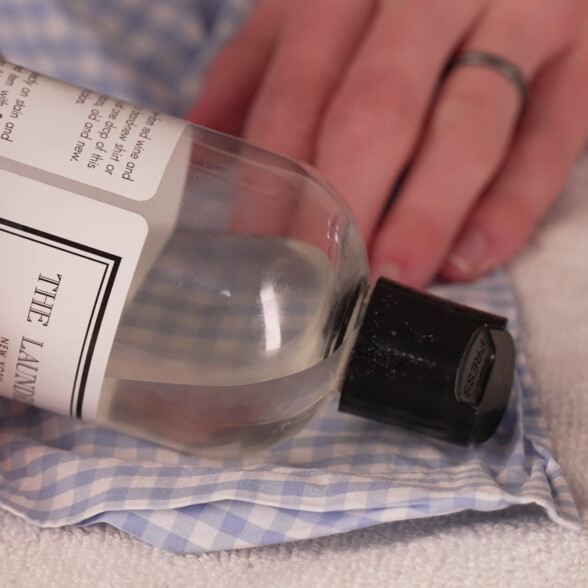
Test it.
Before beginning any cleaning process, make sure to test the process on an inconspicuous part of the garment. Let it sit for at least five minutes to determine what effect it will have on the color fastness of the garment.
Let the treatment sit for at least five minutes, as this will allow you to determine what effect, if any, it will have on the color fastness of the garment. After all, when removing a stain, you want to avoid removing the garments’ original, intentional colors.
Determine the Base Ink
How easily an ink can be removed depends on whether or not it’s water-soluble; that is, whether or not it will dissolve in water.
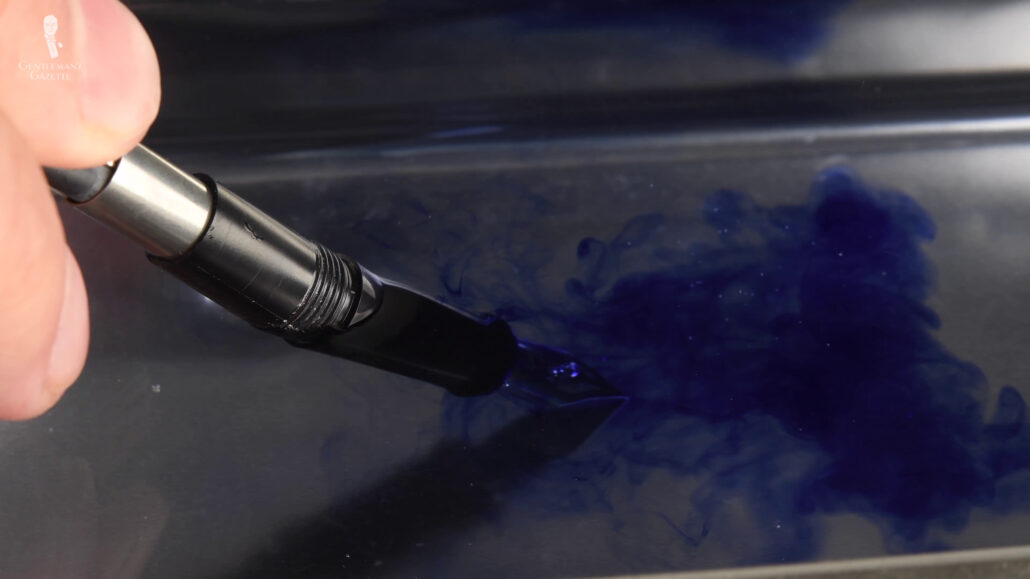
Most dye-based and some pigment-based inks, like those found in many fountain pens and some gel and ballpoint pens, are water-soluble. Meanwhile, oil and alcohol-based inks like those found in some fountain pens, ballpoint pens, felt tip pens, gel pens, permanent inks, and permanent markers like Sharpies are not water-soluble.
Before we move on, though, we’ll also note here that iron gall ink, which you’re most likely to find in vintage fountain pen inks, can be removed using a paste of lemon juice and salt. Apply the paste to the ink stain, let it dry, and then wash the garment as normal.
| Dye/Pigment-Based (Water Soluble) | Oil/Alcohol-Based (Not Water Soluble) |
| – Many Fountain Pens | – Some Fountain Pens |
| – Some Ballpoint Pens | – Most Ballpoint Pens |
| – Some Gel Pens | – Some Gel Pens |
| – Felt-Tipped Pens | |
| – Permanent Markers | |
| – Permanent Inks |
So, if you know that the ink isn’t water-soluble or if the stain is old and dried, skip to Phase II of our cleaning process. Meanwhile, if you know that the ink is water-soluble or if you aren’t sure, begin here with Phase I.
Phase I: Water-Soluble Stains
For phase one of the process, you will need a towel, a clean cloth, water, a spray bottle, eyedropper or cotton balls, liquid laundry detergent, hand soap, or stain remover, and, optionally, a soft brush like a toothbrush for instance.
First, place the garment on a towel. For layered garments like shirts, position the towel or layer an additional cloth to prevent bleed-through. Apply water with a spray bottle, eyedropper, or soaked cotton ball to the stained area.
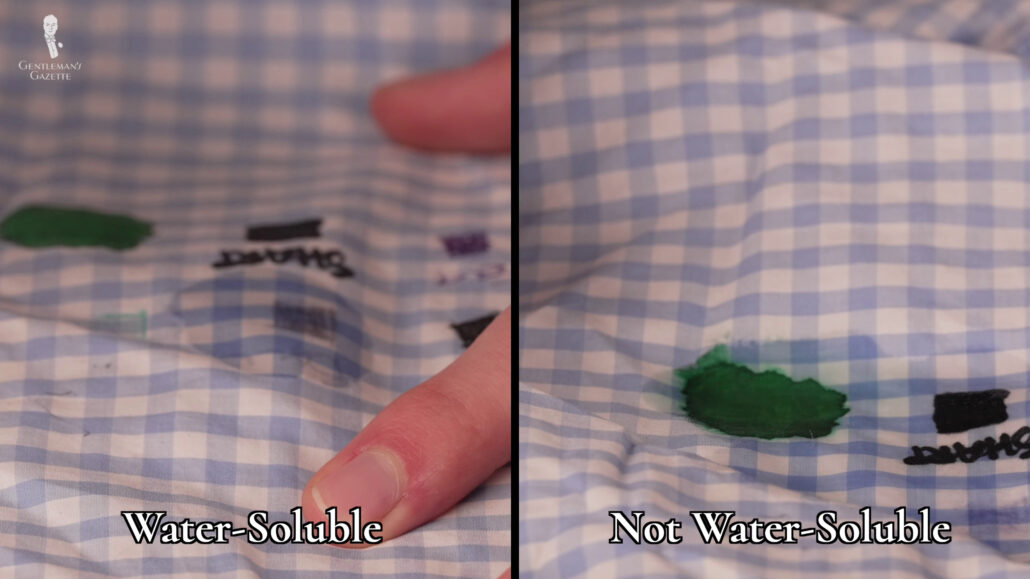
If the ink doesn’t liquify or seems to be spreading, it’s likely not water-soluble, so allow the entire area to dry and skip to phase two. If the ink does liquify, using a dry cloth, blot away the ink as it liquefies.
If the stain persists and it’s safe to use on the garment, you can apply a small amount of liquid laundry detergent onto the stain or you could also use hand soap or a dedicated stain remover. Again, we like The Laundress Stain Solution. Gently massage in the cleanser of your choice using a soft brush or the fabric itself. Let it sit for five minutes, and then rinse. Repeat this process until the stain is removed.
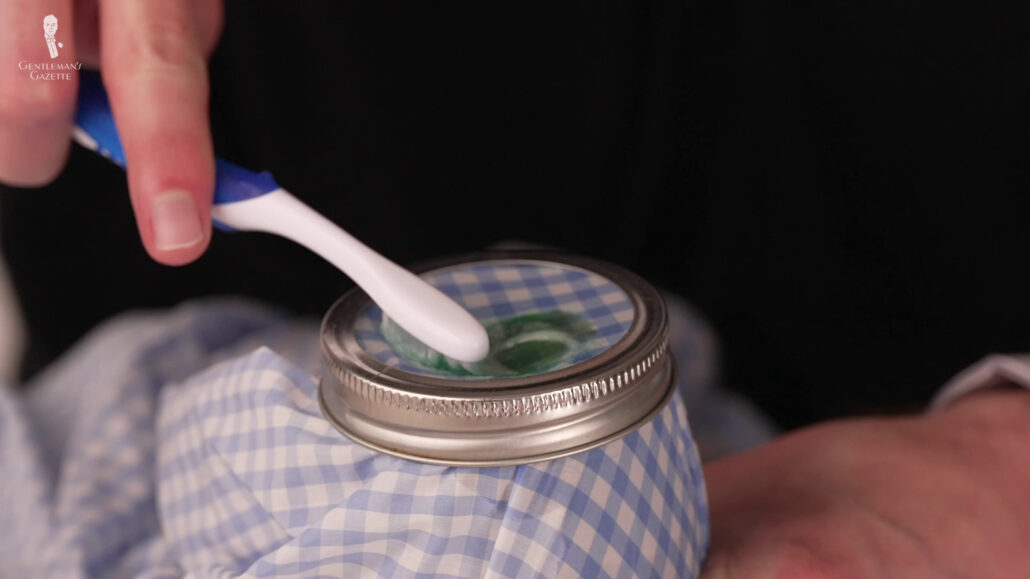
If this process doesn’t work on your ink stain, proceed to the next phase.
Phase II: Non-Water-Soluble Stains
Next, for phase two of our process, you will need a towel, a clean, dry cloth, an eyedropper or cotton ball, a jar, isopropyl alcohol, acetone, and a bleach alternative. To dissolve stubborn ink stains, we need to use a solvent, and the best of these is isopropyl or rubbing alcohol. In a pinch, though, you could also use hairspray, hand sanitizer, or even vodka.
After the ink has been allowed to dry, place the garment on a towel. For layered garments like shirts, position the towel or layer an additional cloth to prevent bleed-through. Carefully apply the solvent of your choice using a soaked cotton ball or eye dropper.
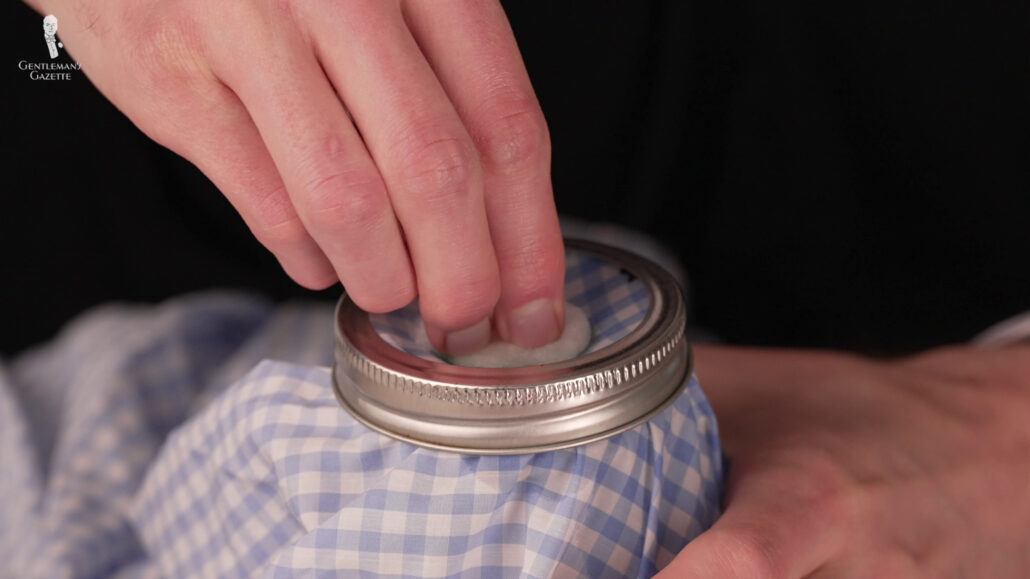
For more delicate fabrics like linen, washable silk, and synthetics or, if the solvent seems to be spreading around the ink rather than lifting it up, apply the solvent with the fabric taut over the mouth of a jar – stain side facing down – to prevent the solvent from pooling on the fabric.
Gently blot at the stain with the cotton ball or a clean cloth until the stain is removed or considerably faded, and then, rinse the garment to remove excess solvent. Wash at the highest safe temperature according to the garments care instructions, applying dedicated stain remover if needed.
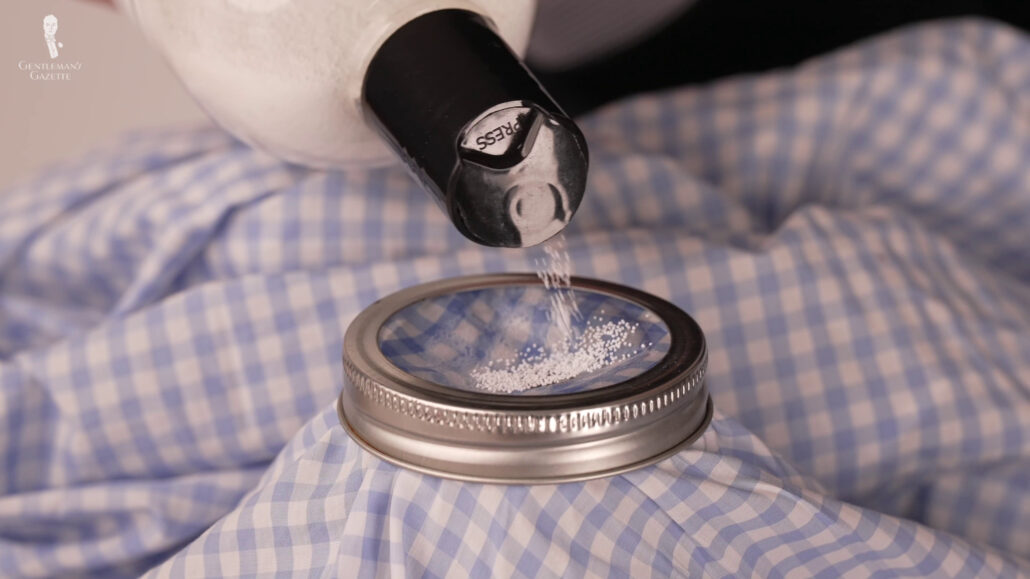
Also, consider using a bleach alternative to further reduce the appearance of the stain, and you can learn more about this, again, in our general guide to stain removal.
If the stain is very resistant, you can repeat the process, substituting acetone for the isopropyl alcohol. Keep in mind though that acetone is more likely to damage a fabric, so be sure to use it cautiously.
Dedicated Ink Stain Removing Products
If the methods we’ve outlined here don’t work, you can always turn to the pros – as in professional stain removal products. These cleaners are specially-formulated to remove ink stains. Two of the most popular options are Carbona Stain Devils #3 and Amodex Ink & Stain Remover. Again, not sponsored.
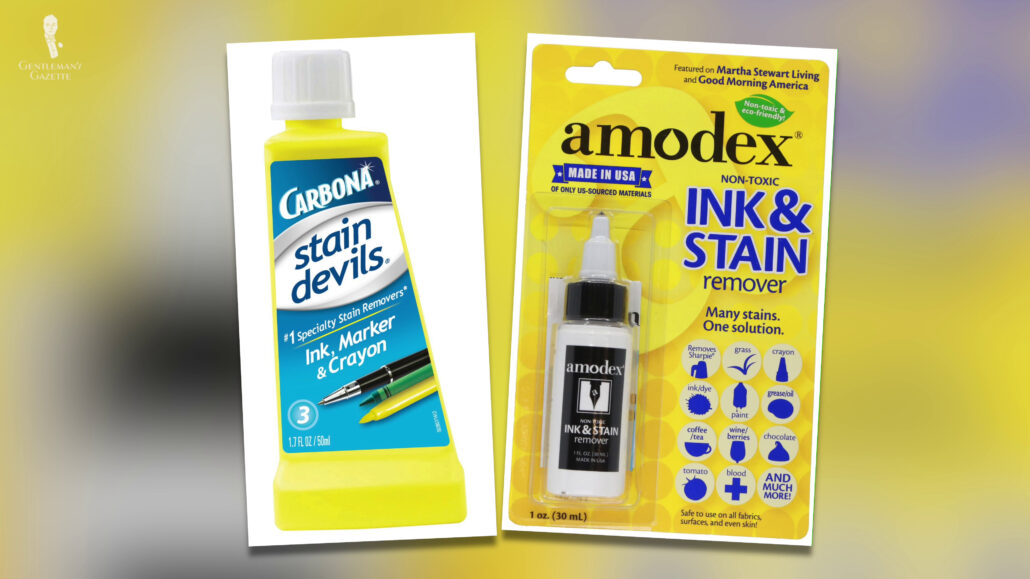
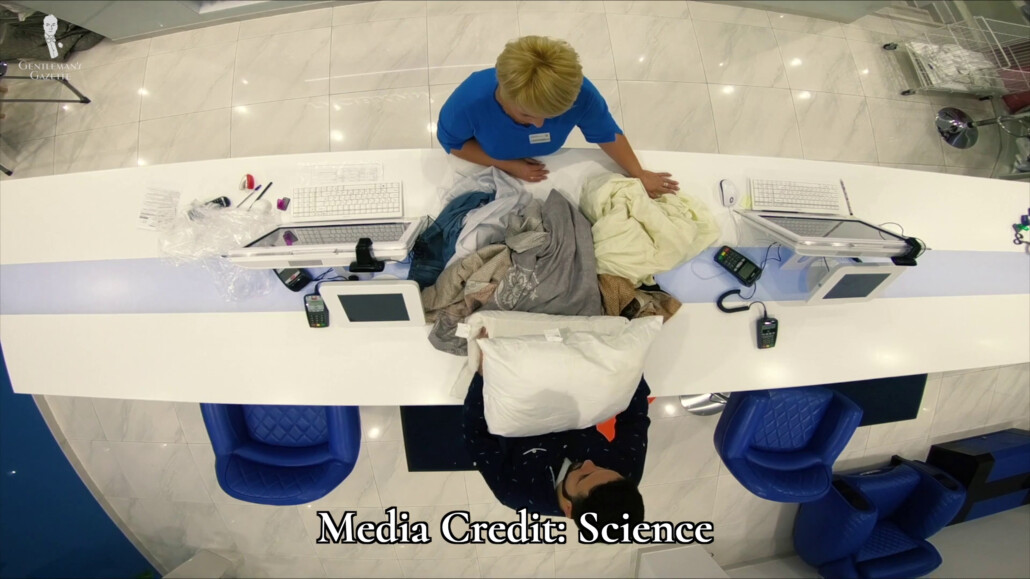
And if those methods don’t work, you can always turn to the pros – as in professional dry cleaners. Take your stained garment to a trusted, well-reviewed dry cleaner and provide them with as much information about the stain as possible to see what their experience and tools can do for you.
Conclusion
Ink stains can take a lot of the fun out of writing, especially if you’re writing with a fountain pen. But we hope that today’s guide has provided you with useful information on how to remove stains if and when they do occur.
Let us know in the comments below if you have any other tips for removing ink stains!
Outfit Rundown
Today, I’m wearing a casual outfit good for sitting around the house and perhaps doing some writing or some stain removal. Of course, the central element is my black cardigan sweater, and I’m wearing it over a gray and white, fine-striped shirt. The shirt has French cuffs, but I’ve got them configured in a barrel style today and fastened with simple black links that aren’t meant to be seen under the sweater sleeves.
My trousers are plain charcoal gray, and my shoes are simple black loafers with comfortable rubber soles from Allen Edmonds. And for the casual nature, I’ve left product out of my hair and let my beard grow a bit. Also, part of my outfit today is a vintage watch, which is a new addition to my own collection.
I purchased the watch from Delray Watch Supply. They’re a frequent collaborator of ours in that they send us watches to film. However, they’re not sponsoring today’s post. As mentioned, the watch is vintage, and it comes from the American company Benrus. It dates to the early 1960s, and its specific model number is 3081.
The case is slim and silver in color, and the face of the watch is also silver, though it does have a warm cast to it. I’ve got it on a simple black leather band for the moment to harmonize with my current outfit. Though, I may have to buy more bands in the future to allow the watch to go with more other outfits as well.
Finally, rounding out my outfit today are my two-tone, shadow-striped socks in charcoal gray and light gray from Fort Belvedere. You can find the socks I’m wearing, as well as a wide array of other classic men’s accessories, by taking a look at the Fort Belvedere shop.
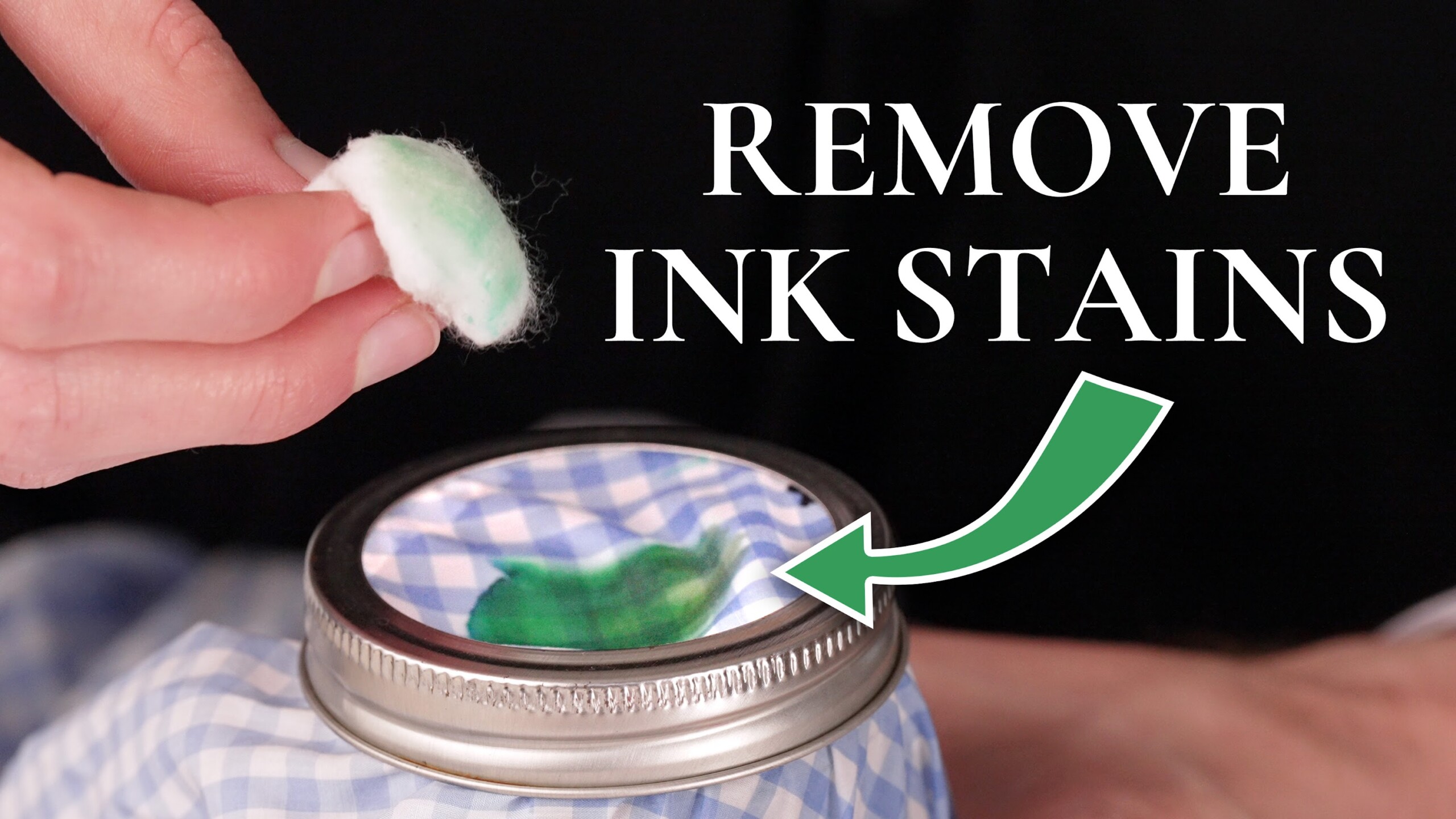
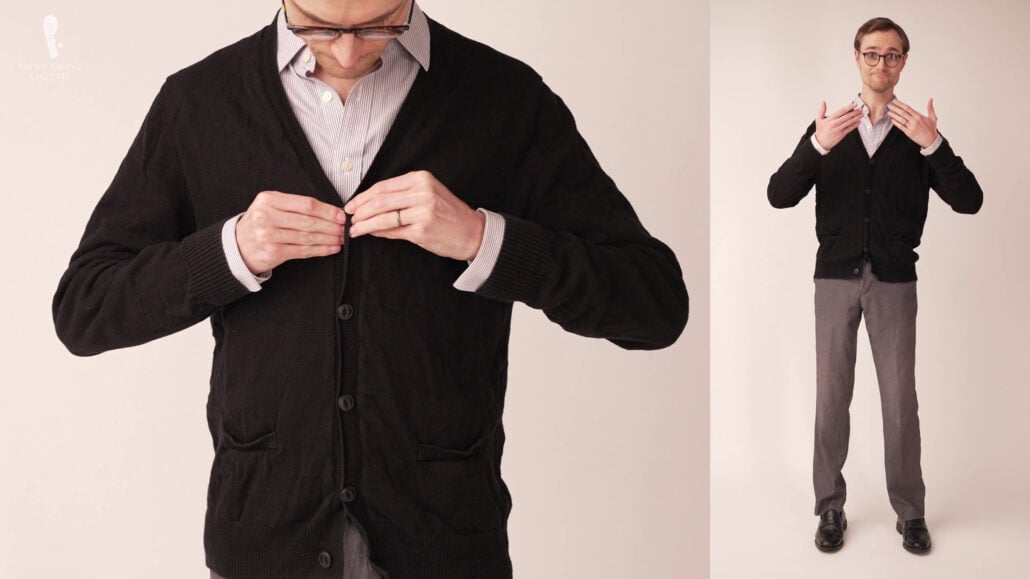
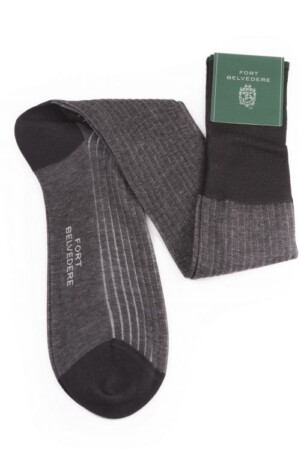
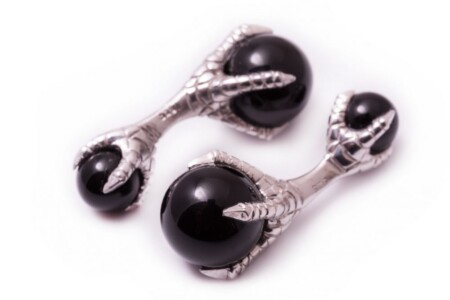
1) Liquid bleach will quickly remove ink stains on your hands.
2) For ink stains on white cloth only, immediately drench the stain with liquid bleach. Wait a few seconds, and then drench the cloth with cold running water.
Like the ink stain removal information.
Now, how to remove lipstick on my collar.
Nicely done guys! I’ve created a sub-folder called “Garment Care” under my “Gentleman’s Gazette” main folder. Thanks for all that you do.
Thanks for the kind words, Michael – glad to see we can be of assistance!